Nearly 100 years after the film was made, the epic French silent drama La Roue has finally been released on Blu-ray. This version, almost 7 hours long, closely-resembles the early-1923 cinematic experience. Without the detective work done for the 2008 DVD (nearly 4½ hours long), it is unlikely that the longer Blu-ray would have come to fruition. This review is both a plea to the powers that be in France to produce a similar set in English, and a comparison of the 2020 Blu-ray to the shorter 2008 DVD. This overview is a companion to my LA ROUE Screenshots supplementary page.

Contents:
Introduction
No one is paying me for this review, so I’m not going to professionally cite all of my references, but I will include links to what I have found. The screenshots here are “fair use” quality. This new fan montage in 1080p from Saxon Brack gives you a better idea of the Blu-ray picture quality—and special effects of the original film:
The official Flicker Alley page has the DVD version available for rent:
I haven’t kept up with my French for many years, so it has been a challenge to piece together resources in both French and English. For example, I could only understand snippets of the 32-minute restoration documentary, which does not include English subtitles. Also, a month ago I knew next to nothing about the film, just that the director was notorious for making long Romantic dramas, with innovative camera and projection techniques.

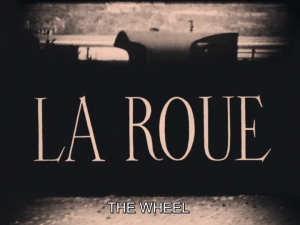
Film production
Let’s make one thing clear: There is no complete or definitive version of the film. The director himself produced at least three official versions, ranging from 10,730 meters long in 1922 down to 2,100m (though unauthorized) in 1928. It is my understanding that there are no pristine original prints of these early versions, so each home release has required a massive effort to reconstruct the film.
I’ll skip the basics and assume you have already read the en.Wikipedia page for La Roue (The Wheel), which is ironically short (at least right now) for such an epic film. In April 1919, the seasoned twenty-nine-year-old Parisian director, Abel Gance, gained international success with the first of his three career epics, J’accuse (I Accuse), an anti-WWI film. That summer, he and his fiancée Ida Danis contracted a bronchial illness and they spent time in the French Alps. He started work on a script originally titled “Le Rail” (The Rail). Gance collaborated with two of the cinematographers from J’accuse, Marc Bujard & Léonce-Henri Burel, and actor Séverin-Mars, who starred in J’accuse.

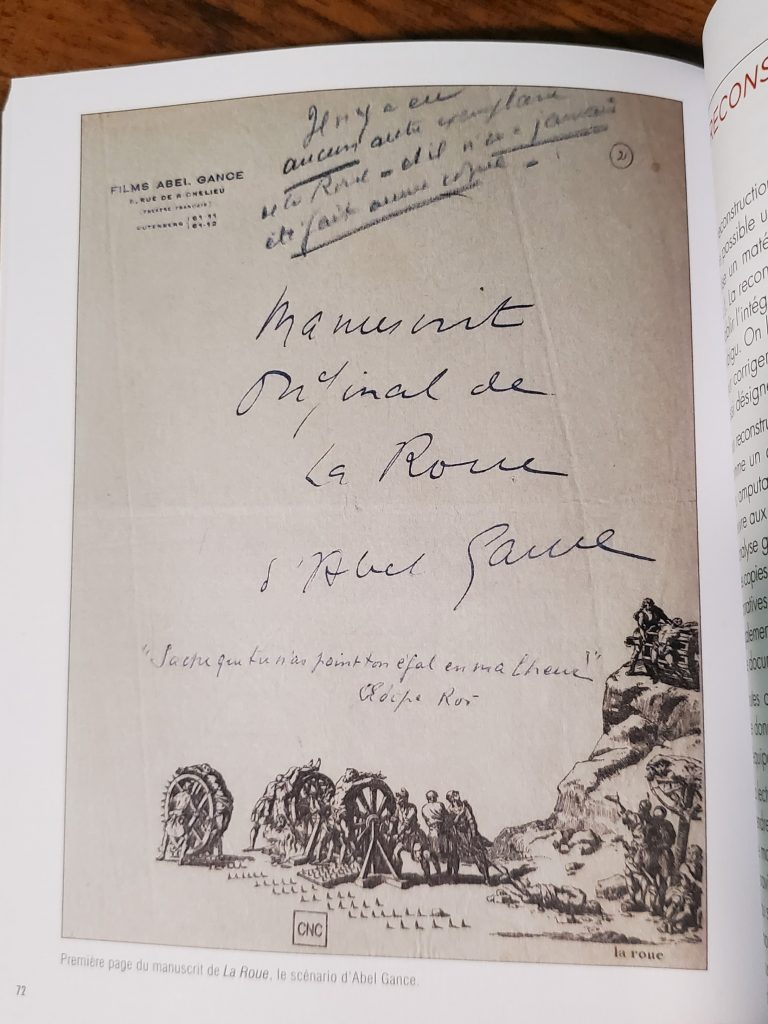
The first half of the film, the “symphony in black,” was filmed between two rail lines in Nice. As Danis’ health continued to decline, Gance moved production to the beautiful Mont Blanc massif (mountain range at the intersection of France, Italy, and Switzerland). Since this second half of the film, the “symphony in white,” was unplanned, Gance developed the remaining scenario as it was being filmed. Danis died on the final day of shooting, April 9, 1921. Séverin-Mars died of a heart attack on July 17th.
Understandably after such tragedy, Gance took more than a year to complete the film. The version that premiered over the course of three Thursdays in December 1922 will probably never be seen again. It had a prologue and six chapters, was 10,730 meters long, and approached nine hours in length. The version most closely resembling the new 7-hour Blu-ray was a 10,495m Parisian general release in February 1923, with a prologue and four parts.* After the premiere, Gance essentially lost control of how he wanted the film distributed. He had trimmed it down to 4,200m for a 1924 re-release, but even this “international” version was intended to be watched in two parts; the 2008 DVD most closely resembles this cut.
There is no official soundtrack for the film, but Arthur Honegger and Paul Fosse compiled a score of 117 pieces of existing music for the 1923 premiere. Honeggar composed the overture and five short pieces. It wasn’t until the 2019 restoration live premiere at Musikfest Berlin that these 117 cues came to life again. This restoration is what resulted in the Blu-ray the following year, reviewed here.
Specifications of the DVD and Blu-ray sets
It’s a shame that this director’s intended film has been so poorly preserved. Fortunately, technology has advanced enough 100 years later that restoration experts are able make old films look even better than their original theatrical runs. If only there was more demand, we could order La Roue at an affordable price! The Blu-ray was originally 50 € but you’d be lucky to find even the DVD-version for less than $115 anywhere now.
Details about the bonus content/compléments are in the Screenshots half of this review.
2008 Restoration
- Released: May 6, 2008
- Produced: Flicker Alley & Turner Classic Movies
- Restoration: David Shepard (Blackhawk Films/Film Preservation Associates) & Eric Lange (Lobster Films)
- 2x region-free DVDs
- Runtime: 263min + 1min restoration credits
- English intertitles, no subtitles
- Conductor: Robert Israel
- 16pp booklet with two essays
2019 Restoration
- Released: June 24, 2020
- Produced: Jérôme Seydoux Pathé Foundation (FJSP) & international collaborators
- Restoration: François Ede
- 4x region-free Blu-rays (or 4x DVDs): 3 discs for feature, 1 disc of bonus content
- Runtime: 414min + 3min restoration credits
- French intertitles, German & English subtitles
- Conductor: Frank Strobel, from original score reconstruction by Bernd Thewes
- 140pp booklet with essays and color photos.
Brief comparison of the two versions
I have watched both versions twice over the past month. While I prefer the longer version, the 2008 restoration is still a good alternative, particularly if you can’t commit to a near-7-hour film. The plot is essentially the same, but the 7-hour cut has several added scenes, particularly in Part Three with the Kalatarikarascopoulos character. Cutting him out was probably a good decision, though, as it introduces unnecessary racism.
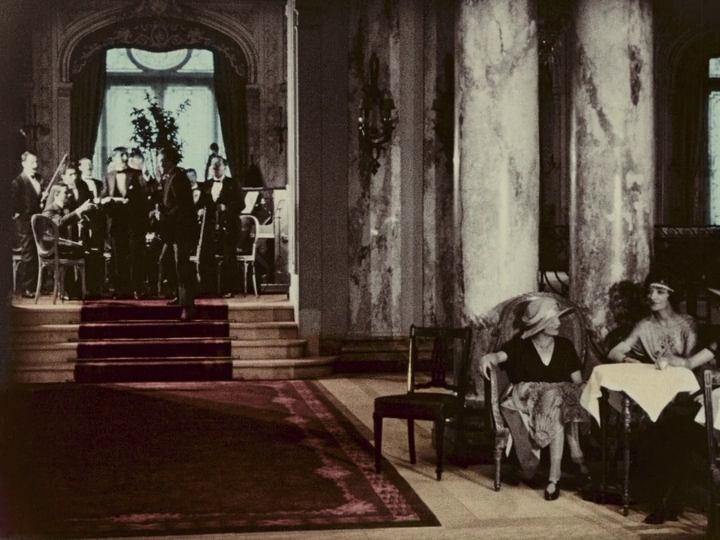
Both versions were constructed from various color-tinted and b/w film elements – the 7-hour cut generally has better detail, and includes a number of hand-colored frames. The longer cut is more stable, with less film jitter. It includes nearly all of the original fonts of the intertitles, which is one of my favorite things about La Roue. There are also more subtitles (over moving images) in the longer cut.
I’ll refer to the shorter cut (4h23m) as “5-hour” for simplicity. The DVD appears to have a faster playback when compared side-by-side with the Blu-ray, but this is probably an illusion due to editing. You can barely make it through a shot in the DVD without a number of frames removed, which isn’t noticeable on its own until you watch the expansive Blu-ray. This in addition to the use of original musical cues for the 7-hour reconstruction makes for better pacing, proper scene order, and more character development. I don’t think Robert Israel had access to those cues for the 2008 DVD.
My film review
I will focus on the 7-hour version (417 minutes including restoration credits), as it is probably as close as we can get to Gance’s original intent, and it looks great on Blu-ray!
I guess I should start by mentioning why I spent so much time with this review. I tend to seek out women-directed films, ones that pass the Bechdel Test, ones made in the fringes of society, and LGBTQ-friendly films. La Roue is none of these.
What stands out most is the epic nature of the film (camera work & outdoor sets), particularly for its time. Louis Feuillade had pioneered long-form serialized films in 1913. Fritz Lang released Dr. Mabuse: The Gamber in 1922, nearly 5 hours long. But these films did not reach the epic heights (literally) of La Roue. We know that Abel Gance visited D.W. Griffith in 1921, and that Gance had long admired his films, particularly Intolerance (1916).
Critics of Gance, even at the time, described his films as unbearable. He was interested in Romanticism, so his work can appear to be overly dramatic for the uninitiated. I will admit that the close-up shots of Sisif’s and Norma’s faces in La Roue tend to drag on, even in the 5-hour version; think Falconetti in The Passion of Joan of Arc (1928). Most of the film is tragic, but there is definitely hope at the end.
The intertitles with quotes from Hugo, Kipling, Sophocles and others could be seen as a flaw, as well. But they’re interesting to come back to upon repeat viewings. I highly recommend the scholarly research by Abel Gance expert, Paul Cuff, if you’re into this kind of academic analysis. For example, it hadn’t dawned on me that Sisif was short for Sisyphus. Most of my fact-checking came from Cuff’s 2011 journal article, “Interpretation and Restoration: Abel Gance’s La Roue (1922).”
The other reason that I spent a lot of time on this review is because the Blu-ray set I watched was on loan. As I mentioned in the Specifications section above, it is criminally expensive and hard to find, so I am grateful to my friend for letting me borrow it. I wanted to get the most out of the experience as I could, and share it here with the world.
I first watched the movie over four different nights (the film is divided into a short prologue and four parts) and I think this is the best way to see it, much like the December 1922 premiere which screened over four different weeks! Each part is less than two hours long, so you get a good feel for the passing of time between each part.
La Roue achieves what the greatest long movies (or plays or operas by Wagner) do, which is becoming your whole world which you simply live in for a while, at the pace of the work itself, not the pace of someone who has two hours for a movie before going back to other things you have to do.
Mike Gebert on Nitrateville (2020)
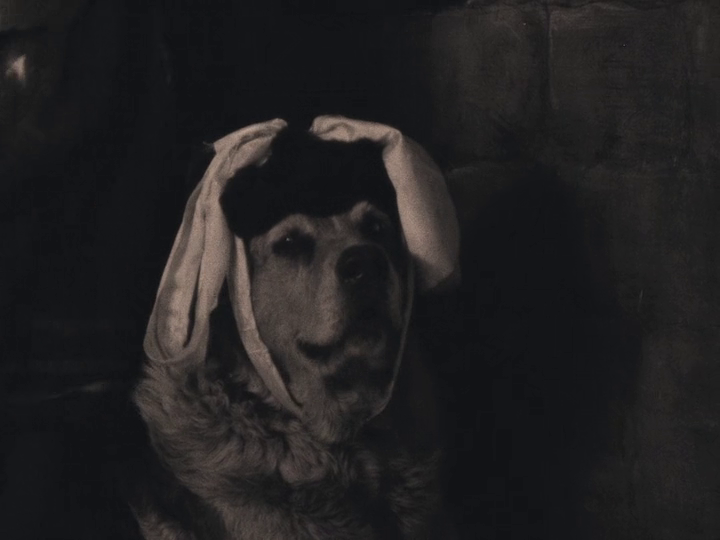
You can read more about the plot on the Screenshots page (part two of this analysis). The ephebophilia (sexual interest in late adolescents) is obviously disturbing, but also part of film’s intrigue. Every actor in the film did a great job, and the story kept my interest throughout – from the train yards in the first half, to the snow-capped mountains in the second half. Norma’s pet goat provides comic relief, and let’s not forget Tobie, Sisif’s canine companion in the second half.
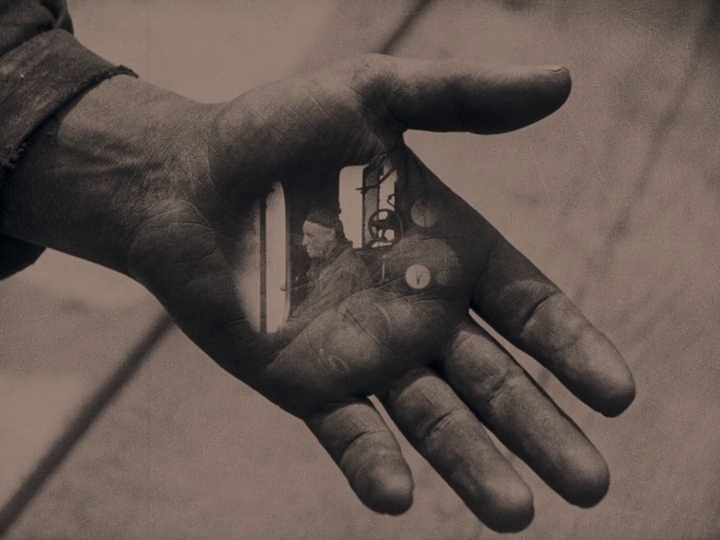
For me, it’s the camera work, framing, and intertitles that set this silent film apart from anything else. From ovate, to circular, to letterboxed framing, as well as the multi-layered superimposed imagery (such as a vision within Sisif’s hand during a palm-reading), it is a marvel of its time. The fast-cut editing during the action scenes is unforgettable, particularly at the end of Part 3, which literally ends with a cliffhanger (before the word even existed).
The film is also a fun tribute to the trains of the time, from “Norma Compound” to the little funicular engine (Norma III) in the mountains. This is only one of the many ways we’re reminded of the titular wheel (“la roue”) that keeps turning. Several times in just the past week, people have said, “just keep moving forward,” a common phrase. I’ll probably think of La Roue whenever I hear that from now on.
I have barely scratched the surface of La Roue. Even my Screenshots supplementary page doesn’t feel like a satisfactory representation of the film. But hopefully it’s enough to convince you to seek it out, plan out your viewing, and enjoy a century-old work of art.
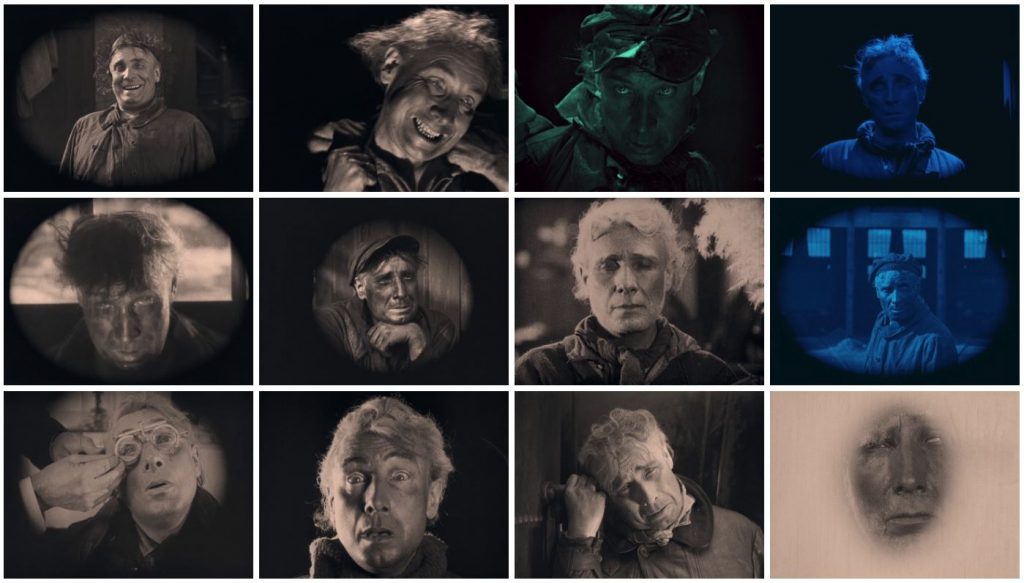
For a more objective and detailed account of the plot, continue to the second half of my review: LA ROUE – 4.5hr vs 7hr discs (Screenshots)
* Research for the 2019 release revealed that the previously-reported 9,200m length of the 1923-version was inaccurate.
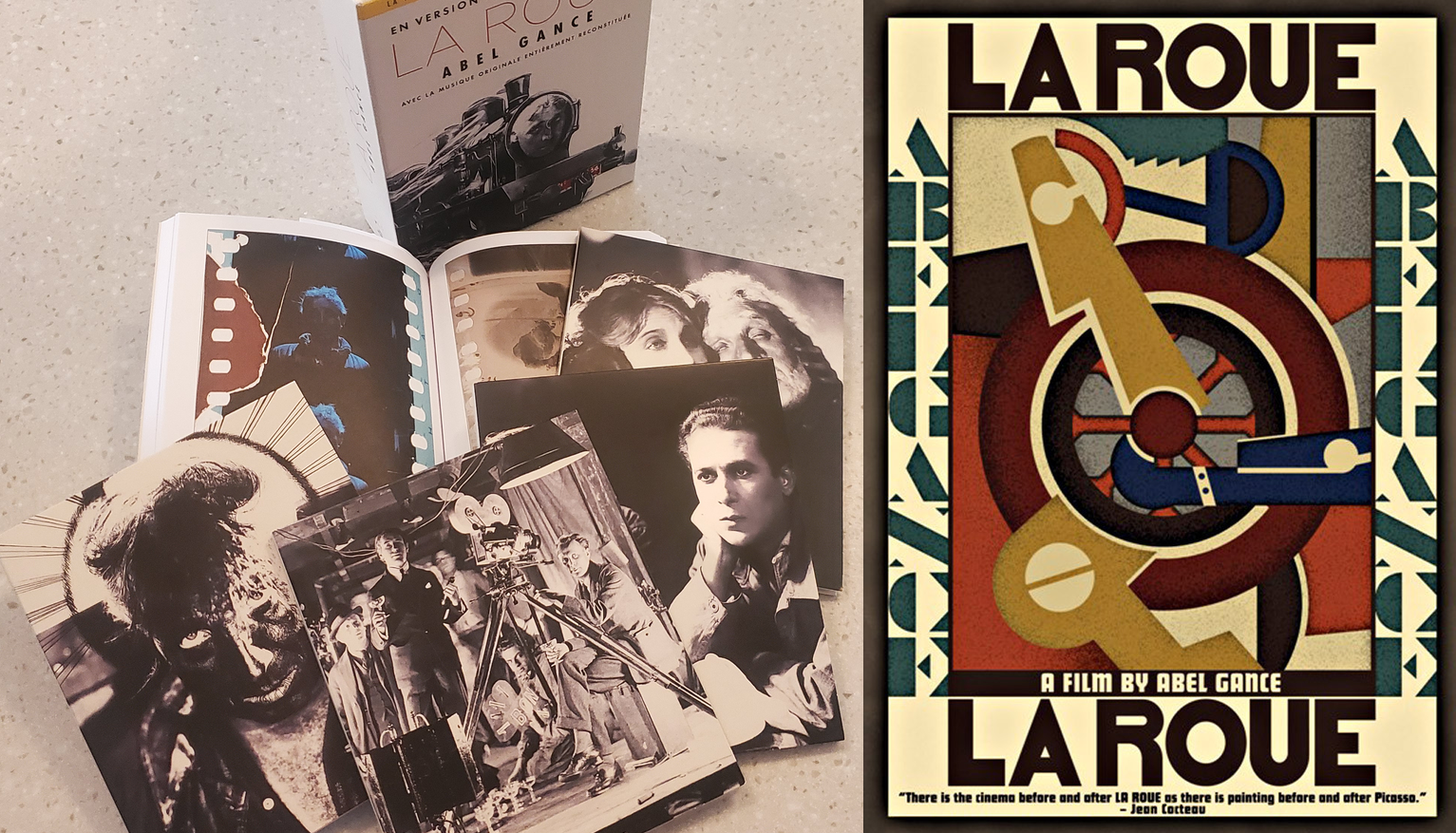
Comments
5 responses to “LA ROUE – 4.5hr vs 7hr discs (Overview)”
A beautiful and helpful review. Thank you.
I’ve owned the Flicker Alley DVD for many years in my unwatched pile waiting for a rainy day, and was gutted I missed out on the blu-ray.
Does anyone reading this know if a standard edition is on the horizon? Or should I ask Pathé themselves?
I emailed several Pathé email addresses in May, asking for a North American release, but no one replied. It’s baffling to me that they did all this restoration work for such a limited home release.
Thank you J. J. for your response, and once again for your amazingly in-depth writing on this release. After my comment I was able to find a brand new copy of the blu-ray for an obscenely high price so I have that on the way to me now.
I’ve had the Flicker Alley DVD in my unwatched collection for many years, trying to find the time to watch it! Rather glad I didn’t now as I can’t wait to see it for the first time, closer to how it was originally intended.
I look forward to more of your write-ups. Foolish Wives Flicker Alley vs Kino next please!
Let’s see how many adjectives we can use to describe the price of the Pathé set!
Foolish Wives? Not a bad idea, as I’ve never seen it, but certainly want to. Do you have either release (that I could borrow)?
Yes, well none of those adjectives are appropriate for typing!
I have the old Kino release but still need to get my hands on the beautiful Flicker Alley resto. Great film, you’ll love it, although I would probably still rate Greed higher. I’ll let you know once I have the Flicker Alley BD so I can see about lending it to you although we are in different continents I think!